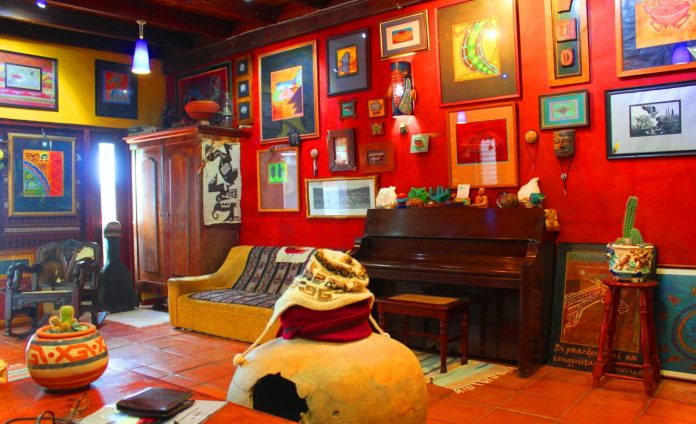Since the beginning of time people have collected and selected all kinds of things and for an infinite use and reasons. All this selecting and discarding contributed in engineering man`s success into organized social groups of civilization. For example the world’s vegetation; plants were used to build shelters, bridges and transportation, for food, medicine, color pigments, to weave clotting and ropes, for musical instruments, tools and weapons, and all sorts of unimaginable things.
In this episode we will focus on a very special tree that played a vital role in the conquest of the Caribbean and survival of its habitants in general. Etnia Nativa’s selection in this episode is regarding a very important plant which you can find in Aruba`s country side and emphasizing specially on its fruit it gives. This mythological plant mentioned in Popol Vuh, codex, Mayan literature, the so called masters of the infra-world who killed and decapitated Vucub- Hunahpú, then telling to go put his severed scull in a tree that was planted down the road, this tree that had never ever bloomed. This action of placing the skull in and between the branches provoked an instant burst of green rounded fruits that covered the whole tree. A fruit no living being had ever seen before. That’s why in some regions of Mexico they still call the calbas, Crecentia cujate head of Vucub- Hunahpú.
The Calbas as a practical, reusable, bio recipient has been incredibly valuable over thousands of years, also as a musical instrument or in healing in coming-of-age rituals, festivals and ceremonies. The pulp of the inner fruit is cooked in to syrup to guard against flu and upset stomach. It is also said that this same white pulp full of flat black seeds is also used against ticks and fleas by smearing the whole animal in it, then let it dry on its coat, let it cure and then rinse off with water.
This amazing tree is considered to be a very sacred tree for many ethnic cultural groups in the Americas. Calbas tree seeds have been dispersed all over the tropics during the colonial times for its practicality, interesting shape and reusable resistance. Unfortunately for our island, ne tree less it too many. This fascinating tree has also suffered discrimination lately by those who considers it as something that belongs to the poor, therefore cut down in demands of constructing new buildings and infrastructure without any consideration or respect.
We as a small island should soon come to means, wake up and take action and responsibility to guard our nature. Educate ourselves that these trees flowers only during night time and are manly pollinated by bats whose habitats are also threatened by the exactly same expansive demand of land.
We should make it clear that the calbas has a great importance in the lives and mythology of the Aruban and Meso-Amerindian history and societies, and that plant in general carries very practical uses. The calbas fruit is utilized today in many kitchens and to make beautiful and interesting hand crafts and souvenirs.
This round or spherical fruits has a hard shell which can be separated of the pulp and transformed into a recipient, a flask or a maraca. In some places in Mexico oil, sugar and ethanol is extracted from the pulp.
Arubans who still carry information regarding the traditional application and care taking of islands ethnobotanical heritage, should be taken in consideration to recorded their knowledge providing material for further studies for the coming generations. Finding new ways to share ethno-botanical wisdom would surely benefit many when presented in a way it could be applied in a simple and contemporary context of practice.
The common looking tree grows modest in size with a lot of noted elongated branches, has tear- drop leaves that can fall off, leaving the tree leafless during the dry season. Every tree gives one size and shape of fruit. Flowering occurs directly out of stem and branches. These trees are still fairly common on the island. Many healing properties have been recorded through the ages from different regions and Amerindian ethnic groups which could reveal potent cures.
We invite you to make your appointment at Etnia Nativa and find out about our stories, authentic Aruban stories.
Discover an Aruba which no other could share with you. Discover and explore and take your experience home with you. Our renowned indigenous and educative session has been entertaining curious participants for decades. Mail us at: etnianativa03@gmail.com to confirm your participation. Our facilities and activities takes place close to your hotel area. 












